Craving that classic, comforting taste of Italy? Let's talk meatballs. Not just any meatballs, but the best Italian meatball recipes that’ll transport you straight to Nonna's kitchen. Forget dry, bland meatballs; we're diving deep into the secrets of creating juicy, tender spheres of deliciousness that will have everyone begging for more. This isn't just about throwing some ground meat together. We're exploring the techniques, the ingredients, and the little touches that elevate a simple meatball into a culinary masterpiece.
Why This is the Best Italian Meatball Recipe
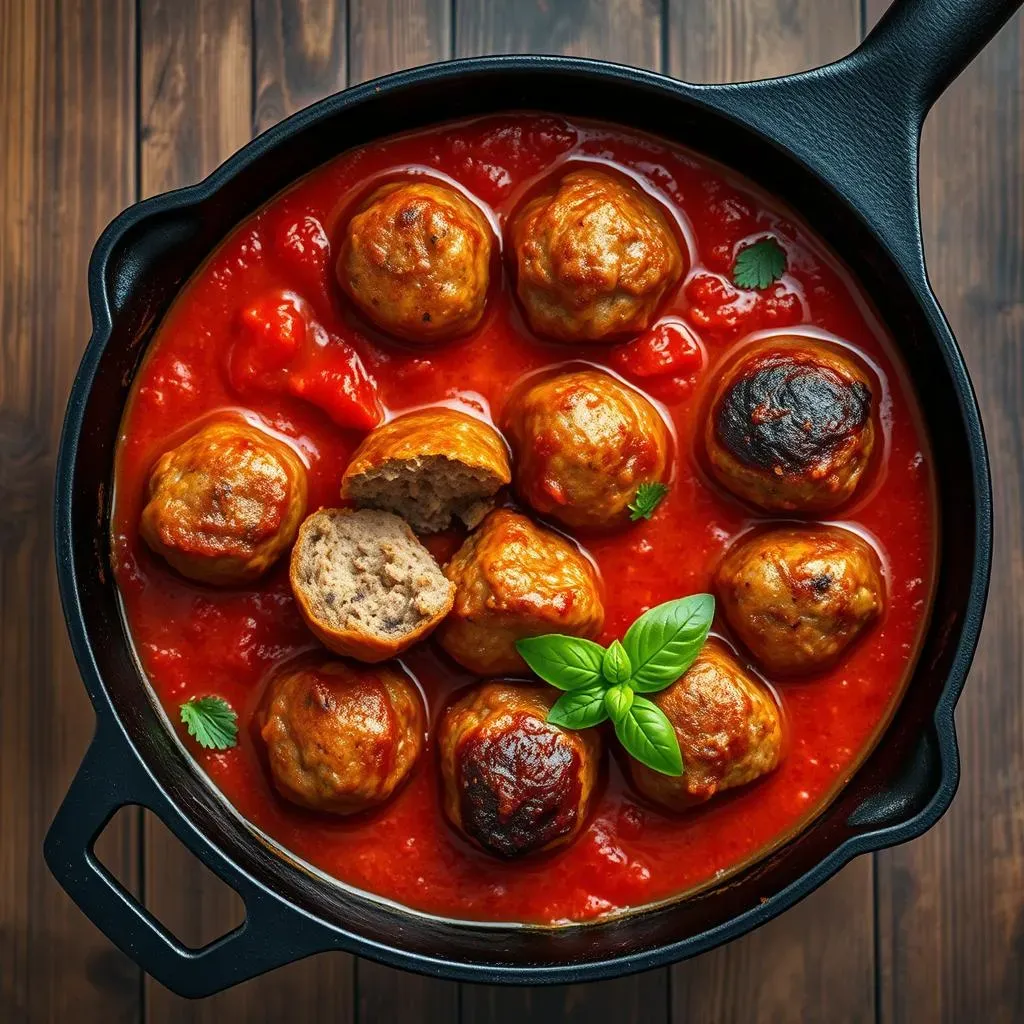
Why This is the Best Italian Meatball Recipe
So, what makes this the best Italian meatball recipe? It's not just one thing, but a combination of factors that work together to create meatball magic. First off, it's about the science. We're using a panade – a mixture of breadcrumbs and liquid (usually milk or eggs) – which acts like a sponge, trapping moisture inside the meatball as it cooks. This is key to preventing dry, tough meatballs. Trust me; nobody wants a hockey puck on their plate. It's also about balance. The right ratio of meat, breadcrumbs, and seasonings ensures that the meatballs are flavorful, tender, and hold their shape perfectly.
But there's more! We’re not just simmering these bad boys in sauce from start to finish. We're giving them a quick broil first. Why? Because browning equals flavor! That little bit of char on the outside adds a depth of flavor that you just can't get from simmering alone. Then, the slow simmer in tomato sauce finishes the job, infusing the meatballs with that classic Italian flavor. It's a technique passed down through generations, tweaked and perfected over time. This recipe isn't just about following instructions; it's about understanding why each step is important. And the result? Meatballs that are unbelievably juicy, flavorful, and tender. That’s why this is the best Italian meatball recipe.
Key Ingredients for Authentic Italian Meatballs
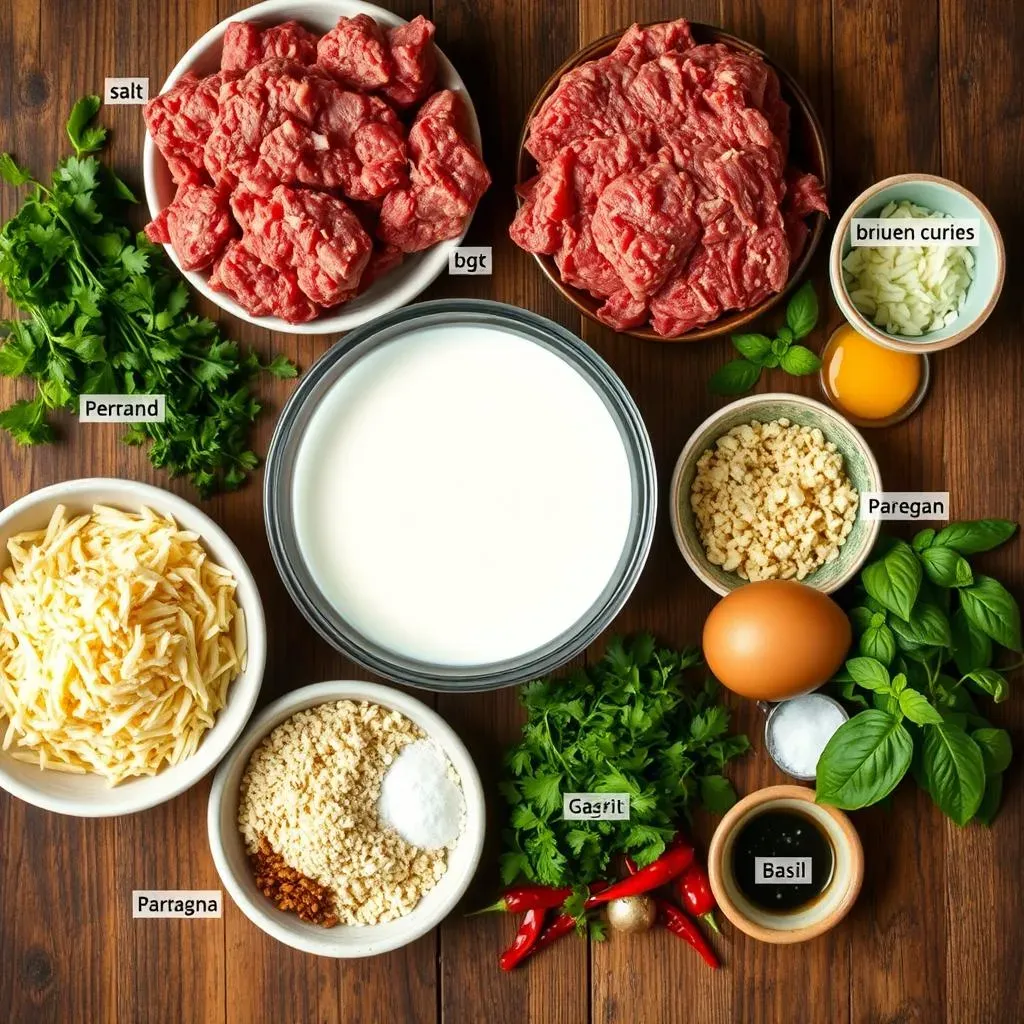
Key Ingredients for Authentic Italian Meatballs
The Perfect Meat Blend
Let's get down to brass tacks: the meat. You can't make the best Italian meatball recipes without nailing this. I'm a big fan of a mix of ground beef and ground pork. The beef gives you that classic meatball flavor, while the pork adds richness and keeps things moist. Aim for around 80-85% lean ground beef. Too lean, and your meatballs will be dry. Too fatty, and they'll shrink up like crazy.
Now, some people swear by adding ground veal to the mix. It definitely adds a certain something, a delicate sweetness that's hard to describe. If you're feeling fancy, go for it! But honestly, a good beef and pork combo will get you 90% of the way there. The ratio I like is about 50% beef, 30% pork, and 20% veal (if using). Don’t be afraid to experiment and find what tastes best to you.
Meat Type | Flavor Profile | Moisture Content |
|---|---|---|
Ground Beef (80-85% lean) | Classic, robust | Moderate |
Ground Pork | Rich, savory | High |
Ground Veal | Delicate, slightly sweet | Moderate |
Beyond the Meat: Binders, Seasonings, and More
meat's important, but it's not the whole story. The supporting cast in the best Italian meatball recipes is just as crucial. First up, the breadcrumbs. Use fresh breadcrumbs, not the dried stuff from a can. Trust me on this one. Fresh breadcrumbs are softer and absorb more moisture, leading to a more tender meatball. Soak them in milk or water before adding them to the meat mixture. This is the "panade" we talked about earlier, and it's a game-changer.
Then there are the seasonings. Garlic is a must, of course. Freshly minced is always best. Parmesan cheese adds a salty, umami punch. Eggs bind everything together. And don't forget the herbs! Fresh parsley is essential, and a little bit of oregano and basil goes a long way. A pinch of red pepper flakes adds a subtle kick. Don't be shy with the salt and pepper, either. Seasoning is key to bringing out the flavor of the meat.
StepbyStep: Making the Juiciest Italian Meatballs
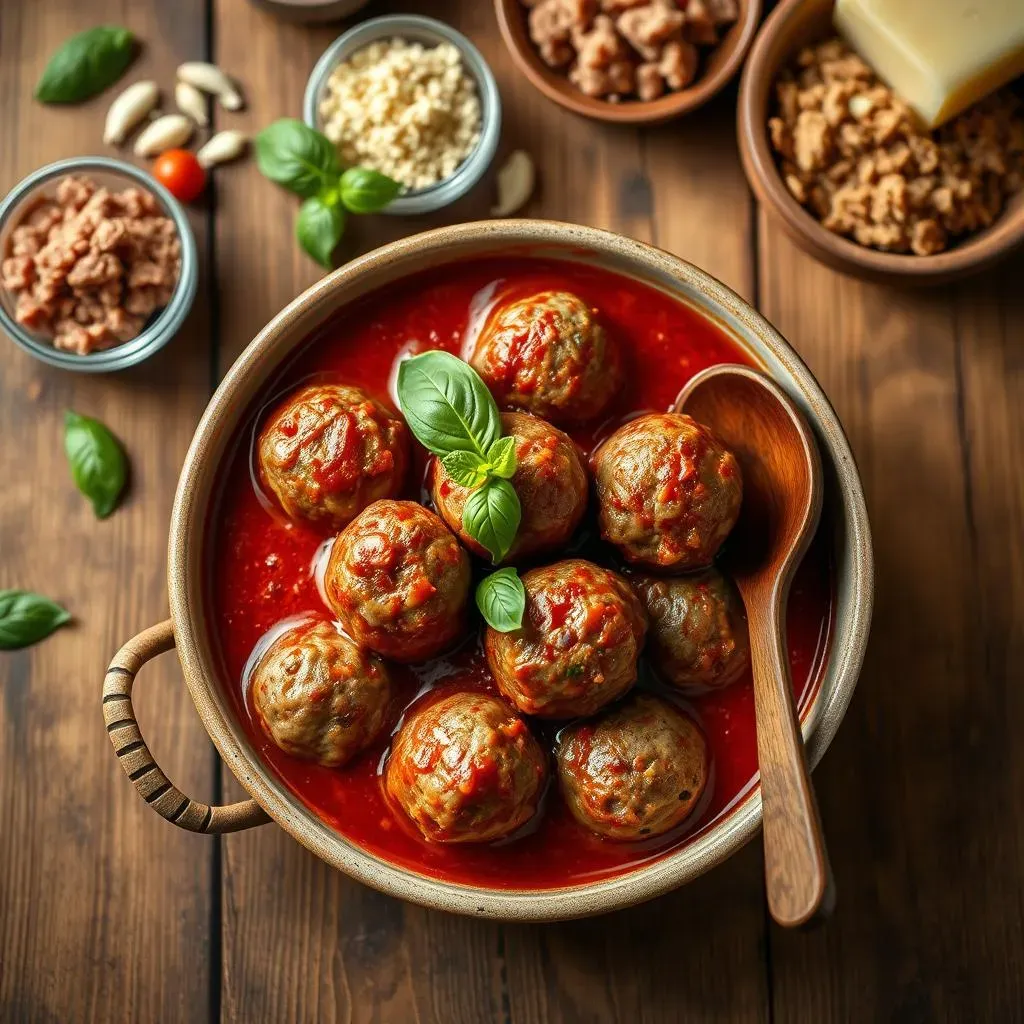
StepbyStep: Making the Juiciest Italian Meatballs
Mixing the Meatball Magic
Alright, now for the fun part! Let's get our hands dirty and mix up these meatballs. First, in a large bowl, combine your ground beef, ground pork (and veal, if you're using it). Gently break up the meat with your hands. In a separate bowl, soak your fresh breadcrumbs in milk or water for about 5-10 minutes, until they're nice and soft. Squeeze out any excess liquid before adding them to the meat mixture. This is crucial for keeping those meatballs juicy!
Next, add your minced garlic, grated Parmesan cheese, eggs, chopped parsley, oregano, basil, red pepper flakes (if using), salt, and pepper to the bowl. Now, here's the key: mix everything together gently! Overmixing will result in tough meatballs. Use your hands to lightly combine the ingredients until everything is just incorporated. You should still see some streaks of fat in the meat mixture. That's a good thing! It means your meatballs will be tender and flavorful.
Broiling and Simmering to Perfection
Once your meat mixture is ready, it's time to shape the meatballs. I like to use a cookie scoop to ensure they're all the same size. This helps them cook evenly. Gently roll the meat mixture into balls, about 1.5-2 inches in diameter. Don't pack them too tightly! Place the meatballs on a baking sheet lined with parchment paper. Now, preheat your broiler to high.
Place the baking sheet under the broiler for about 5-7 minutes, or until the meatballs are browned on top. Keep a close eye on them, as they can burn quickly! Remove the meatballs from the broiler and transfer them to a pot of simmering tomato sauce. Gently nestle them into the sauce, making sure they're mostly submerged. Cover the pot and let the meatballs simmer for at least 1-2 hours, or until they're cooked through and incredibly tender. The longer they simmer, the more flavorful they'll become. Serve over your favorite pasta, with a sprinkle of Parmesan cheese and fresh basil. Enjoy!
Step | Description | Why It's Important |
|---|---|---|
Mixing | Gently combine meat, breadcrumbs, seasonings | Prevents tough meatballs |
Shaping | Form meatballs into uniform size | Ensures even cooking |
Broiling | Brown meatballs under broiler | Adds flavor and prevents sogginess |
Simmering | Simmer meatballs in tomato sauce | Cooks thoroughly and infuses flavor |
Ingredient Substitutions for Your Italian Meatball Recipe
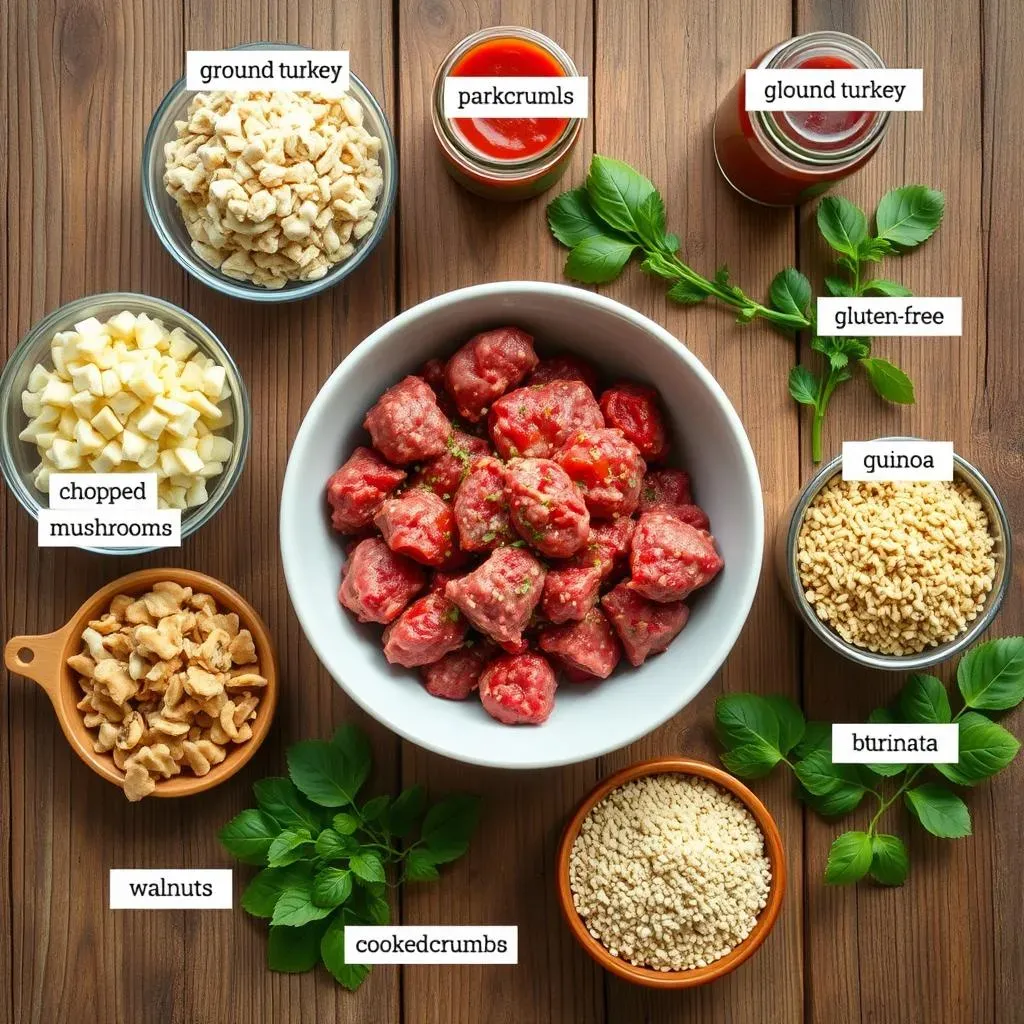
Ingredient Substitutions for Your Italian Meatball Recipe
Meat Alternatives for Meatball Magic
Sometimes, you gotta roll with what you've got, right? Or maybe you have dietary restrictions. No worries! The best Italian meatball recipes are flexible. Ground turkey or chicken can easily stand in for beef or pork. Just be aware that they tend to be drier, so you might want to add an extra egg or a tablespoon of olive oil to the mixture to keep things moist. For a vegetarian option, try using lentils or a combination of finely chopped mushrooms and walnuts. These will give you a hearty, savory flavor that's surprisingly similar to meat.
If you're using ground turkey or chicken, I recommend browning them in a pan before adding them to the sauce. This will help to develop their flavor and prevent them from being bland. As for the lentil or mushroom-walnut mixture, make sure to sauté them with some garlic and onions before adding them to the other ingredients. This will help to bring out their natural sweetness and add depth to the meatballs.
Substitution | Notes | Considerations |
|---|---|---|
Ground Turkey/Chicken | Add extra moisture | Can be drier than beef/pork |
Lentils | Sauté for flavor | Vegetarian option |
Mushroom/Walnut Mix | Finely chop ingredients | Hearty, savory flavor |
Swapping Out Other Key Players
What if you're out of breadcrumbs? Or maybe you're gluten-free? Don't panic! There are plenty of substitutes you can use in your best Italian meatball recipes. Crushed crackers, like Ritz or saltines, work in a pinch. Gluten-free breadcrumbs are an obvious choice for those avoiding gluten. You can even use cooked rice or quinoa! These will add a slightly different texture, but they'll still do the job of binding the meatballs together.
And what about the sauce? If you don't have time to make your own, store-bought tomato sauce is perfectly fine. Just look for a good quality sauce with simple ingredients. You can always doctor it up with some extra garlic, herbs, and a pinch of sugar to balance the acidity. As for the cheese, Parmesan is classic, but Pecorino Romano or Asiago would also be delicious. The key is to experiment and find what works best for you and your taste buds.
FAQs: Perfecting Your Italian Meatball Recipes
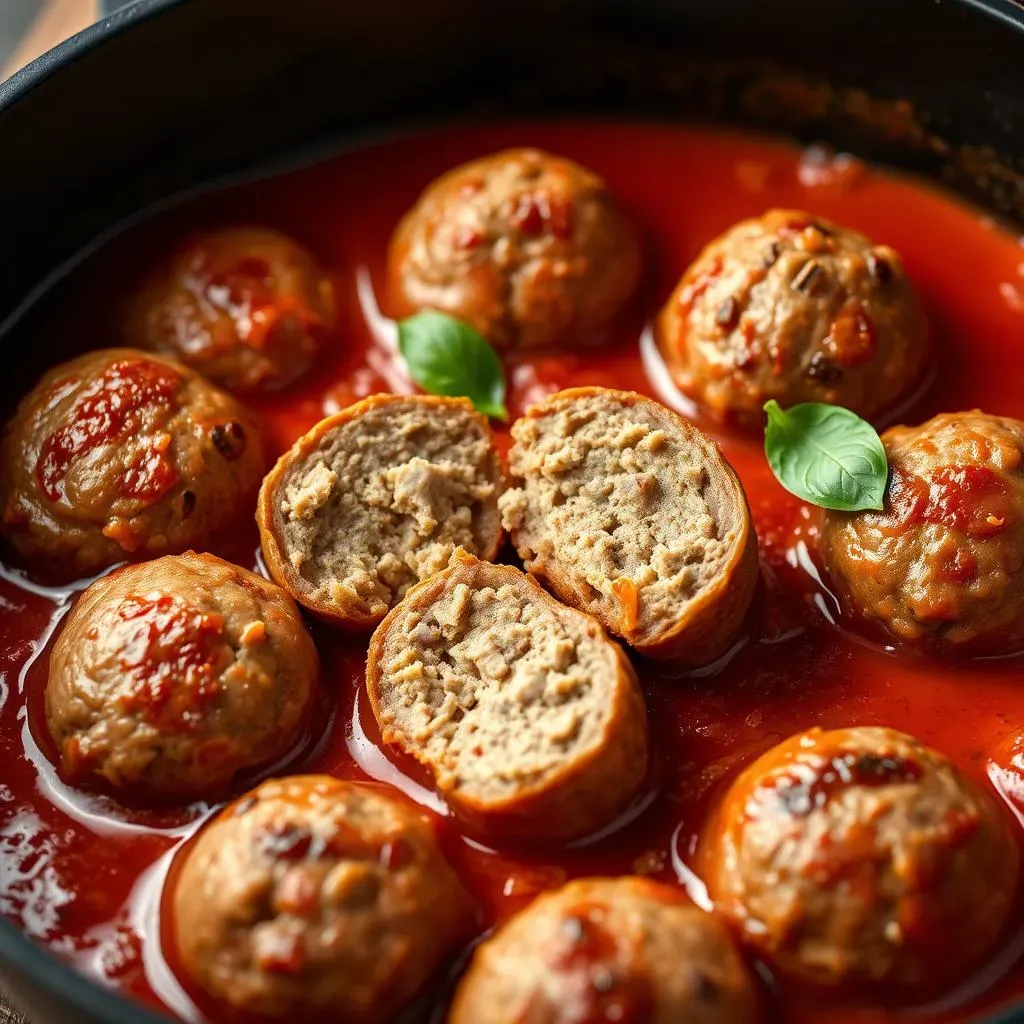
FAQs: Perfecting Your Italian Meatball Recipes
Why are my meatballs tough?
Tough meatballs are a bummer, but easily avoidable! The most common culprit is overmixing the meat mixture. Remember, you want to gently combine the ingredients until they're just incorporated. Overmixing develops the gluten in the breadcrumbs, leading to a dense, tough meatball. Also, using meat that's too lean can result in dry, tough meatballs. Aim for that 80-85% lean ground beef we talked about earlier. Another thing to consider is overcooking. Make sure you're simmering the meatballs gently in the sauce, not boiling them. Boiling can toughen the meat.
Another reason your meatballs might be tough is that you aren't using a panade. A panade, which is bread soaked in milk, helps keep the meatballs moist and tender. If you skip this step, your meatballs might end up being dry and tough. Also, be sure that you are using fresh breadcrumbs instead of dried breadcrumbs. The fresh breadcrumbs will absorb more of the moisture and will result in a more tender meatball.
Problem | Solution |
|---|---|
Overmixing | Mix gently until just combined |
Meat Too Lean | Use 80-85% lean ground beef |
Overcooking | Simmer gently, don't boil |
Can I freeze meatballs?
Absolutely! Meatballs freeze beautifully, making them a great make-ahead option. There are a couple of ways to freeze them. You can freeze them raw, after you've shaped them. Place the raw meatballs on a baking sheet lined with parchment paper and freeze them for about 2-3 hours, or until they're solid. Then, transfer them to a freezer bag or airtight container. This prevents them from sticking together in the freezer. Alternatively, you can freeze them after they've been cooked in the sauce. Let the meatballs cool completely in the sauce, then transfer them to freezer-safe containers. Make sure to leave some room at the top of the container, as the sauce will expand as it freezes.
When you're ready to use the frozen meatballs, you can thaw them overnight in the refrigerator or cook them directly from frozen. If you're cooking them from frozen, you might need to add a little extra cooking time. Frozen meatballs are a great way to have a quick and easy meal on hand whenever you want it!
Your Italian Meatball Adventure Awaits
So, there you have it – your roadmap to crafting truly unforgettable Italian meatballs. Armed with these tips, tricks, and techniques, you're well-equipped to create meatballs that are tender, flavorful, and guaranteed to impress. Don't be afraid to experiment with different ingredients and variations to find your own signature meatball. The most important thing is to have fun and enjoy the process. Now go forth and create some meatball magic!